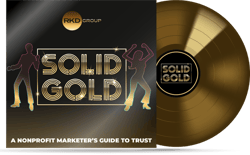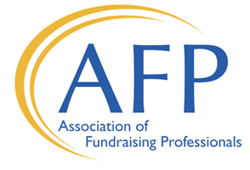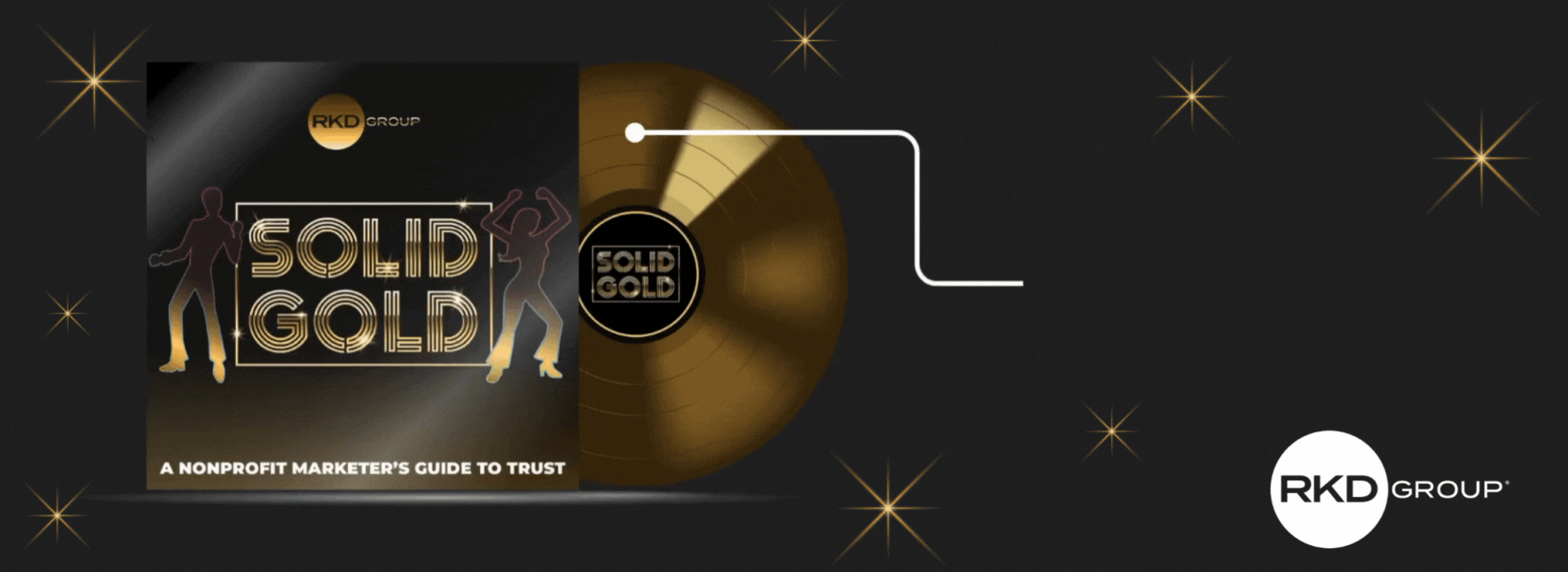.png?width=250&height=250&name=Email%205.23%20Rossi%E2%80%99s%20Roundup%20(1).png) It’s the dog days of summer, and I hope you are surviving and not melting in the heat waves.
It’s the dog days of summer, and I hope you are surviving and not melting in the heat waves.
How gratifying and wonderful it has been to see the overall nonprofit industry collaborating together and gathering around the need to #QuitBadFundraising, recognizing the urgency for radical change in fundraising practices. Meetings, workshops, lunches, coffee shop gatherings and more are taking place across the nonprofit industry with authentic conversations, and we’re all working together to find new solutions.
Over my coffee this morning, I started thinking about how we build this next chapter. Then, it occurred to me that we just need to follow the ABCs. (OK, maybe I had too much coffee, but bear with me as I’m about to get a little squirrelly with acronyms.)
In order to ALTER the donor experience, we must be ...
- Asking communication preferences (then monitoring actions)
- Building trust through our organization’s actions
- Creating experiences and engaging those who desire it
If we do those things, it PAVES the pathway to a strong donor relationship by
This might sound like a broken record, but let me emphasize once again: stewardship. Please work your plan/build a plan! Donor trust is key to retention and growth. Prepare your case now for your board of directors and committees for why you and your team need specific resources to retain your organization’s most precious asset.
Speaking of which, RKD Group has just finished a new research study on this topic. We surveyed 1,630 U.S. donors to gain a deeper understanding of what forces drive trust. Get ready to dig in!
1. Solid Gold: The Nonprofit Marketer's Guide to Trust
 Trust is the single most important thing a nonprofit can deliver—it's truly solid gold. But today, we find that trust in nonprofits is declining, falling behind businesses for the first time in the history of the Edelman Trust Barometer report.
Trust is the single most important thing a nonprofit can deliver—it's truly solid gold. But today, we find that trust in nonprofits is declining, falling behind businesses for the first time in the history of the Edelman Trust Barometer report.
How did we get here? How can nonprofit organizations build back up that trust with donors going forward?
Don’t stop now—go read! I’m just whetting your appetite! There are a few surprises …
Key Takeaways:
- Transparency and competence are the key drivers of trust.
- Donors expect communication - but on their terms.
- Generational differences play a role in who is trusted.
- What drives trust doesn't drive relationships.
2. What will giving look like this year?
 Although only a small group of 356 individuals responded, their answers provide insights into how donors are being influenced by economic, political and environmental factors. Of the donors surveyed, 80% indicated that they’d be donating to the nonprofits they care about this year.
Although only a small group of 356 individuals responded, their answers provide insights into how donors are being influenced by economic, political and environmental factors. Of the donors surveyed, 80% indicated that they’d be donating to the nonprofits they care about this year.
What’s most interesting is that 42% stated that they planned to increase their giving. Here were some of their reasons for giving more:
- 83% increased need
- 25% increased income
- 11% successful investments
Only 6% plan to give less, and 10% indicated they are not planning to give this year at all. When asked why donors were planning to give less, here were there reasons:
- 58% less income or personal hardship
- 27% inflation
- 16% lack of tax incentives
- 15% planning to bundle their donations next year for tax purposes
Results show 60% of surveyed donors plan to donate online. 37.8% intend to mail checks to charities. A smaller number of respondents plan to give through means other than cash: donor-advised funds (9.2%), stock transfers (4.4%), and cryptocurrency (2.2%). Almost 25% of donors are planning a recurring gift.
3. Economists are cutting back their recession expectations
 Forecasters still expect GDP to eventually contract, but later and by less than previously anticipated. Economists are dialing back recession risks. Easing inflation, a still-strong labor market and economic resilience led business and academic economists polled by The Wall Street Journal to lower the probability of a recession in the next 12 months to 54%, down from 61% in the prior two surveys.
Forecasters still expect GDP to eventually contract, but later and by less than previously anticipated. Economists are dialing back recession risks. Easing inflation, a still-strong labor market and economic resilience led business and academic economists polled by The Wall Street Journal to lower the probability of a recession in the next 12 months to 54%, down from 61% in the prior two surveys.
While that probability is still high by historical comparison, it represents the largest month-over-month percentage-point drop since August 2020 when the economy was recovering from a short but sharp recession induced by the COVID-19 pandemic. It reflects the fact that the economy has kept growing even as the Federal Reserve has raised interest rates and inflation has declined.
Nearly 60% of economists said their main reason for optimism about the economic outlook is their expectation that inflation will continue to slow.
The survey of 69 economists was conducted July 7-12. That means their optimism was recorded even before new GDP reports showing the U.S. economy grew more than expected in the second quarter this year.
4. Inflation is easing, but nonprofits still feel a crunch
 Let’s check the economic impact on the nonprofit industry:
Let’s check the economic impact on the nonprofit industry:
- Inflation slowed for the 11th straight month in May, registering a 4.1 percent annual growth rate, the lowest 12-month figure in over two years.
- The national unemployment rate decreased slightly to 3.6 percent in June, down from the previous seven-month high of 3.7 percent and near its lowest point in half a century.
- In June, consumer confidence bounced back by 7.9 percent, reaching its highest level in four months, as measured by the University of Michigan Index of Consumer Sentiment.
- The stock market ended strong in June, closing out the first half of the year at its highest level since April 2022.
5. Survey: Millionaires are hoarding cash, betting on higher rates
 Millionaire investors are adding to their mountains of cash, betting on higher interest rates and weak stock markets in 2023, according to the CNBC Millionaire Survey.
Millionaire investors are adding to their mountains of cash, betting on higher interest rates and weak stock markets in 2023, according to the CNBC Millionaire Survey.
More than a third of millionaire investors (34%) report keeping more of their money in cash, according to the survey, which surveys households with $1 million or more in investible assets. They now have 24% of their portfolio in cash, up substantially from the 14% they held in cash a year ago.
Of the survey respondents, 28% said they have purchased more fixed income as they expect interest rates to remain high.
The results echo a recent survey by Capgemini that found global high-net-worth investors had a record 34% of their portfolios in cash or cash equivalents, such as money markets, CDs and other vehicles.
“These investors are moving from growth to value, to protecting their assets,” said Elias Ghanem, global head of Capgemini Research Institute for Financial Services. “Right now, it’s better to be safe than sorry.”
6. The second gift: Turning donor impulse into a conscience choice
![]() What if we prioritize thanking donors?
What if we prioritize thanking donors?
What if organizations were more integrated? What if they could provide the gratitude given to major donors to everyday donors, too? What if the thank-you message was as important as the “can-you” message?
Data shows these are more than what-if questions. They are what it takes to grow efficiently and effectively.
It’s important to dig into your technology stack. Understand it. Use it to the fullest. To think about creating personalized experiences at scale across your digital ecosystem. To connect and engage with your audiences where they are. To look at donors and what their actions are telling you.
Create a thank-you culture. We’re halfway through the year, but I want to challenge all nonprofits to create a thank-you culture across their ecosystems this year.
7. The richcession keeps rolling
 In a recent analysis, economists at Bank of America Institute found that in the 30 states that directly deposit unemployment benefits into laid-off workers’ accounts, the number of benefit recipients in households earning $125,000 a year or more was up 40% in April from a year earlier.
In a recent analysis, economists at Bank of America Institute found that in the 30 states that directly deposit unemployment benefits into laid-off workers’ accounts, the number of benefit recipients in households earning $125,000 a year or more was up 40% in April from a year earlier.
This was more than five times the increase than that in households earning less than $50,000. Moreover, the 30-state sample might understate the increase in high-wage earners receiving unemployment benefits because it didn’t include California (which issues benefits via prepaid debit cards), home to many of the tech companies where layoffs have been concentrated.
A tight labor market and in-demand skills mean that many well-off workers who lose their jobs can probably find new jobs fairly quickly—but maybe not at the same level of pay.
8. Workers are still raiding their retirement savings at record rates
![]() Thirty-seven percent of workers have taken a loan, early withdrawal and/or hardship withdrawal from their 401(k) or similar plan or IRA, according to a survey released in July by the nonprofit Transamerica Center for Retirement Studies (TCRS) in collaboration with the Transamerica Institute.
Thirty-seven percent of workers have taken a loan, early withdrawal and/or hardship withdrawal from their 401(k) or similar plan or IRA, according to a survey released in July by the nonprofit Transamerica Center for Retirement Studies (TCRS) in collaboration with the Transamerica Institute.
The survey found 30% took a loan and 21% took an early and/or hardship withdrawal.
Generation Z are somewhat more likely than Millennials, Generation X and Baby Boomers to have taken an early and/or hardship withdrawal (28%, 24%, 19% and 12%, respectively).
And in the first three months of 2023, the number of plan participants taking hardship withdrawals jumped 33% from the same period a year earlier, with workers taking out an average of $5,100 each, according to a Bank of America report.
The biggest roadblock for the majority (53%) of workers to retirement savings is crystal clear: debt, the Transamerica survey found. There is, however, a sharp split across generations. Millennials, Gen X and Gen Z are more likely to say that’s the issue than Baby Boomers (58%, 56%, 54% and 34%, respectively).
Other reasons for hardship withdrawals:
- 17% paying for certain medical expenses
- 16% payments to prevent eviction from one’s principal residence
- 15% expenses and losses incurred due to a disaster in a federally declared disaster area
- 14% payment of tuition and related educational fees
- 13% cover costs related to purchase of a principal residence
- 12% expenses for qualified repairs to damage of principal residence
- 6% burial or funeral expenses
9. Donor retention: How to sustain relationships year after year
 When donors know that they matter to your organization, they’ll stay involved! Here are a few effective ideas for recognizing your donors:
When donors know that they matter to your organization, they’ll stay involved! Here are a few effective ideas for recognizing your donors:
- Write a heartfelt thank-you note. Personalize your thank-you note with your donor’s first name and donation amount, specifying how your organization will use their contribution to make a difference. Then include a real signature from someone at your nonprofit.
- Create a thank-you video. Get your organization’s team together to create a fun, casual, and personalized thank-you video for your donors.
- Gift your branded merchandise. Everyone loves to represent organizations that they care about, whether it’s their alma mater or their favorite nonprofit! This recognition strategy has the added benefit of transforming your donors into ambassadors for your nonprofit every time they wear or use the gifted item.
- Recognition will only be meaningful if you’re recognizing your donors in a way that resonates with them. To find out how your donors prefer to be thanked for their contributions, ask them!
- You may find, for example, that some donors prefer a public shoutout on social media, while others like a more private token of appreciation like a thank-you note.
10. Check out more great posts, podcasts and webinars
Blog updates:
- How can nonprofits regain the trust of donors?
- Lessons from J.Lo: Digital fundraising requires patience
- Should nonprofits jump onto Meta’s new social network, Threads?
Podcast updates:
- Tony Martignetti thinks about exploring curiosity and finding contentment
- Matt Monberg thinks about being fearless and taking risks
- For even more go to: https://rkdgroup.com/podcast/
Past Webinar Recordings:
- Transform your newsletters to be donor-centric with Lisa Rossi
- Craft captivating videos that engage your donors with Chris Weiland
- How to build stories around your content with Billy Vaudry
- Develop inclusive and effective messaging with Erin Albitz
- For even more go to: https://info.rkdgroup.com/webinars






Leave a comment: